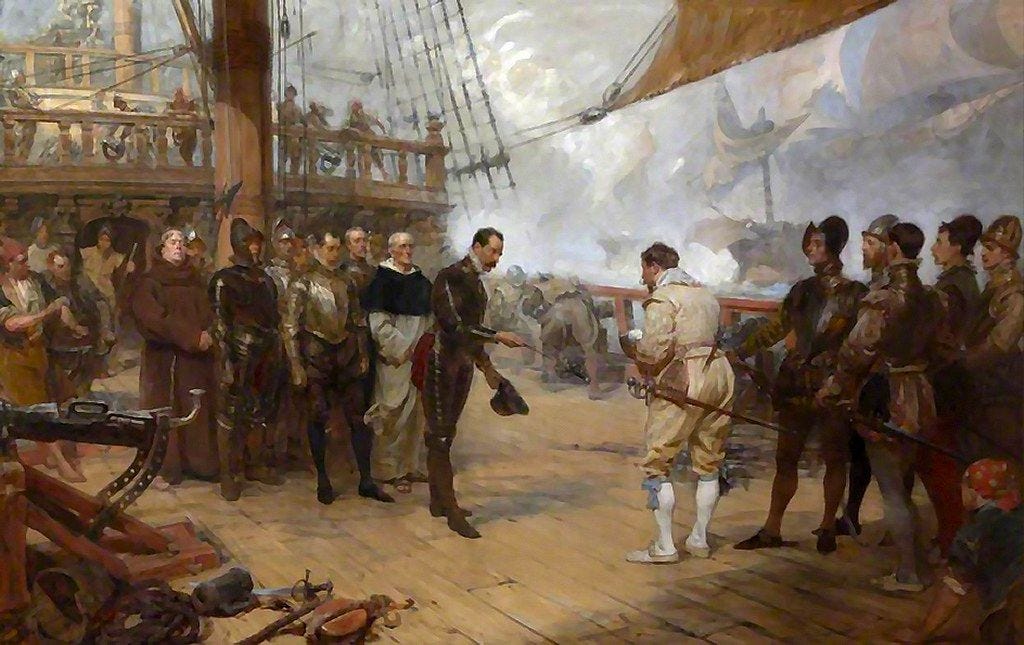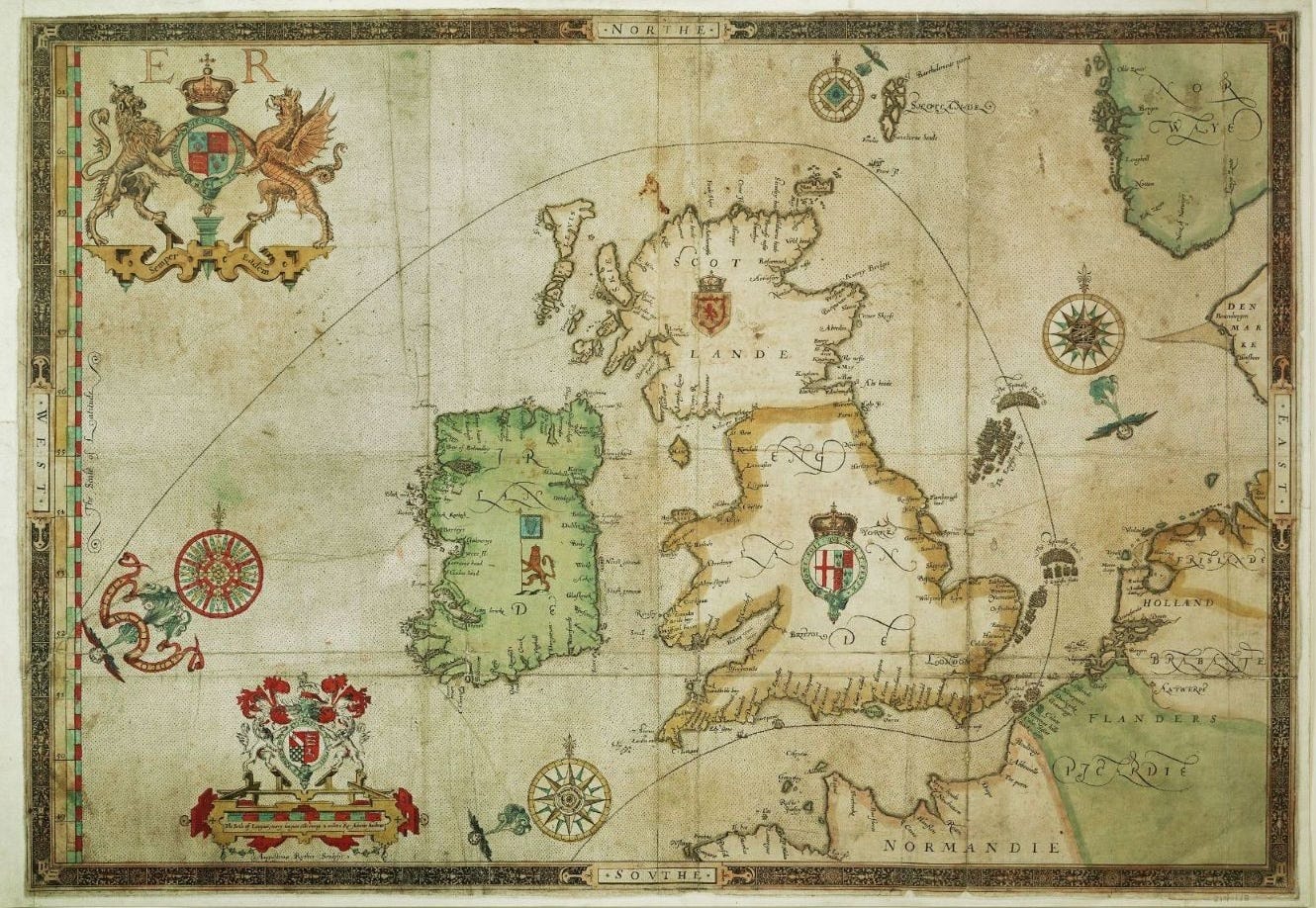
On 8 August 1588, off the coast of Gravelines near the Spanish Netherlands, the English navy dealt a crushing blow to the Spanish Armada, one of the most formidable naval forces ever assembled at the time. The defeat marked a turning point in European history, safeguarding Elizabethan England from invasion and asserting England as an emerging naval power.
Tensions between Catholic Spain and Protestant England had been simmering for years. King Philip II of Spain, a staunch Catholic, saw Protestant Queen Elizabeth I as a heretic and usurper. He was also enraged by English privateers, such as Sir Francis Drake, who raided Spanish treasure ships returning from the Americas.
The execution of Mary, Queen of Scots in 1587—Philip’s Catholic cousin and a potential claimant to the English throne—was the final provocation. Determined to restore Catholicism in England and topple Elizabeth, Philip assembled a vast fleet: the Armada. His plan was to sail up the English Channel, link up with the Duke of Parma’s army in the Netherlands, and invade England.
The Spanish Armada, comprising around 130 ships and 30,000 men, set sail from Lisbon in May 1588. However, it faced immediate problems: storms in the Bay of Biscay scattered the fleet, forcing repairs and delays.
By July, the Armada entered the English Channel. The English navy, commanded by Lord Charles Howard of Effingham and his vice-admiral Sir Francis Drake, adopted innovative tactics. English ships were faster, more manoeuvrable, and employed longer-range guns. Rather than boarding Spanish ships, they harassed them with cannon fire, keeping their distance.
The decisive engagement came on 8 August 1588, near Gravelines, just off the Flanders coast. The Spanish fleet had anchored in a defensive crescent formation. The English launched fire ships—vessels set ablaze and sent drifting towards the anchored Armada. In panic, the Spanish cut their anchor cables and scattered to avoid the fires.
Seizing the moment, the English attacked. In the ensuing chaos, they inflicted serious damage. Though no Spanish ships were sunk in the battle itself, several were disabled and many suffered heavy casualties. Lacking coordination with Parma’s forces and facing unfavourable winds, the Armada was forced to retreat northwards, abandoning any hope of invasion.
The Spanish Armada attempted to return home by sailing around Scotland and Ireland. Violent storms battered the already weakened fleet, wrecking ships along the coasts. Of the original 130 ships, only about half limped back to Spain. Thousands of sailors died from shipwreck, hunger, and disease.
The defeat of the Spanish Armada was hailed in England as a miraculous deliverance. Queen Elizabeth I, in her famous speech to the troops at Tilbury, declared:
“I know I have the body of a weak and feeble woman; but I have the heart and stomach of a king, and of a king of England too.”
Though the war with Spain continued for several more years, the failed invasion shattered Spain's aura of invincibility. It was a pivotal moment in the decline of Spanish maritime dominance and the rise of England as a major naval and imperial power.
The event also took on almost legendary status in British history, often portrayed as divine favour for a Protestant nation. The phrase "God blew and they were scattered" captured the sense that nature had played a role in England’s salvation.
CLICK HERE to read more History and Happenings articles.
If you love history, then you’ll love The Chronicles of St Mary’s series by Jodi Taylor.





There is a family name in west Cornwall - ‘Jose’ which I understand derives from Spanish sailors who had to land there for some reason, probably repairs or wrecked, and where I live now in Torquay we have the Spanish Barn next to the Abbey, a tithe barn by layout, which housed Spanish prisoners.
If it wasn’t for a bit of a storm we would all now be speaking Spanish,